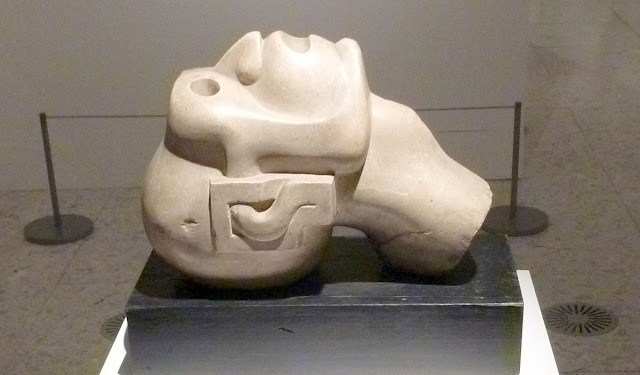Caught in the Crossfire,
at the Herbert Art Gallery in Coventry.
The exhibition explores how artists have responded to the brutality of war and to the desire for peace and reconciliation.
Soldier, by Kennardphillipps, 2006 (pigment ink, oil, plaster, pva on acid free paper on newspaper)
Kennardphillipps see their work as a critical tool that connects to international movements for political and social change. They do not view the work separate from social and political movements that are confronting established economic and political systems, but as part of those movements, 'the visual arm of protest'.
Red Cross, Kennardphillipps, 2006, (pigment ink, oil, plaster, pva on acid free paper on newspaper)
This work was made as a response to an incident during the 2006 invasion of Lebanon by Israel. The United Nations post in Southern Lebanon was bombed by the Israeli Air Force, which also hit an ambulance in transit. Red Cross uses a press photo of the ambulance roof.
Bomb Hugger, Banksy, 2002
CND Soldiers, Banksy, 2005
An original canvas of this work appeared as part of the display created by the anti-war protestor Brian Haw, who set up camp in Parliament Square in 2001 and remained there until his death in 2011. Dismantled by the police in 2006, the artist Mark Wallinger recreated Haw's display in an installation called State Britain which won the Turner Prize in 2007.
An Bhearna Bhaoil, Gap of Danger, Locky Morris, 1988 (burnt bin lids, tar)
Seven burnt, tyre-printed dust bin lids, a memorial to the Troubles in Northern Ireland, where residents banged dust bin lids on the road to warn of an impending police raid.
Looking closer.
Kennardphillipps
Covering major political events, the visual language Kennardphillips have developed uses common news imagery and photojournalism. The artists sum up their vision by saying: 'The point of our work is to use easily accessible iconic images, but to render them unacceptable... We don't see the work as separate to social and political movements that are confronting established political and economic systems. We see it as part of those movements, the visual arm of protest'.
Cease Firing on All Fronts, Siobhan Hapaska, 2003
As a result of divisions caused by the Troubles, Irish Protestants and Catholics were educated separately. Integrated education has grown in recent years following attempts to establish peace since the 1990s. This image points to a positive, integrated and tolerant future for Northern Ireland.
Use the Ballot, Mandela Speaking before the Election, Ian Berry, 1994
'True reconciliation does not consist in merely forgetting the past', Nelson Mandela.
Use the Ballot, Ian Berry, 1994
Belsen Head, Raymond Mason, 1945
A reaction to images released from the Nazi concentration camps at the end of WWII, the head is stretched back in a scream of pain and anguish. The sunken eyes and mouth are shocking.
The War You Don't See, Kennardphillipps, 2010
This image and the ones below are a series of photomontage studies, commissioned by John Pilger for his film, The War You Don't See. The work focuses on the media's role in war. As weapons and war become ever more sophisticated, the very nature of warfare has developed into an 'electronic battlefield', and the work questions who is the real enemy.
In these studies different press photographs are cut together to rip apart the smooth surface of media representation of political events and bring together images of the perpetrators and the victims - the leaders of the world are placed in the same space as the victims of war.























No comments:
Post a Comment